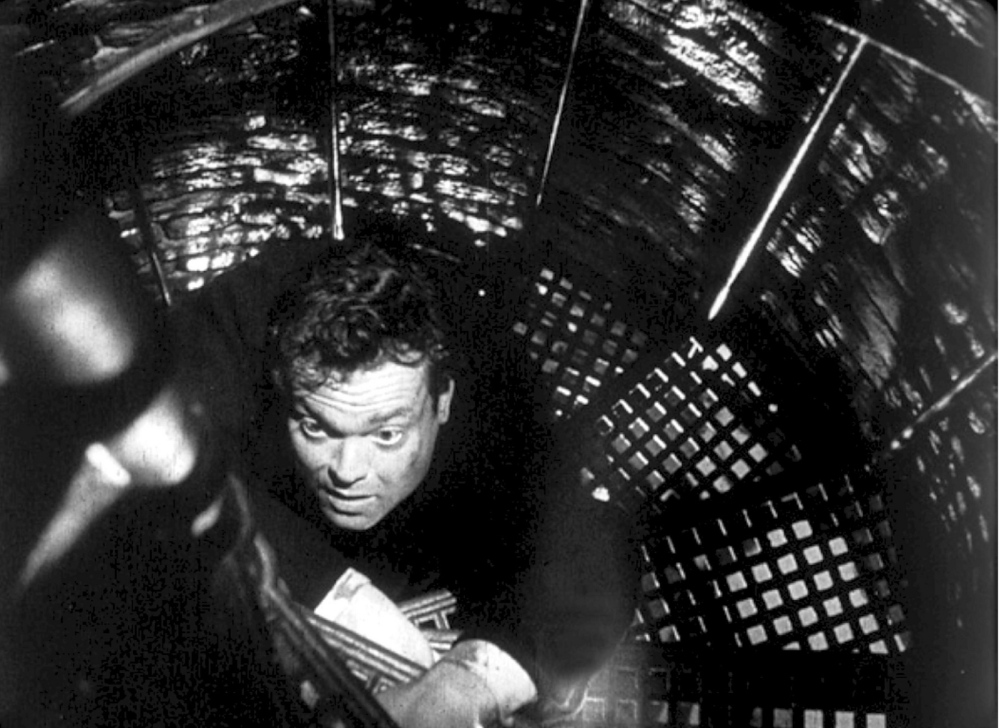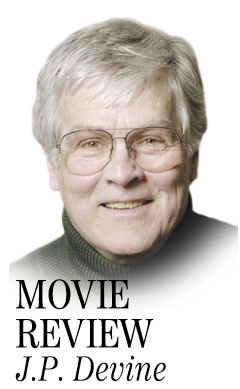“A good friend stabs you in the front.”
— Oscar Wilde
It begins and ends with a funeral, and a young woman walking away from both, down a lonely road in an ancient graveyard outside of Vienna. In between, those of us who have treasured this film since it opened 66 years ago, and those of you new to it, will watch one of the greatest thrillers of all time, a magical piece of intrigue, paranoia and deception.
Despite the dark shadows, the great chase and the setting in the ruins of a dead city, “The Third Man” is a love story — one between two men who were once schoolboys in a sunlit America, and another between a criminal and a bewitched actress (Alida Valli, “The Paradine Case”), both evolving into a star-crossed triangle.
Carol Reed’s “The Third Man,” a dark thriller of post-World War II Europe, was written for the screen by the famed British screenwriter and author Graham Greene. Made in 1949, it belongs in a three-picture volume of classics with “Citizen Kane” and “The Magnificent Ambersons,” all burnished with the gifts of the great Orson Welles, who reportedly wrote all of his own dialogue for the film, including the Ferris wheel speech.
We know that Orson had more than a little influence over the story and cinematography as well.
And it was Orson who insisted on Joseph Cotten to play Holly Martins, not Jimmy Stewart or Cary Grant, both whom producer David O. Selznick wanted.
Selznick wanted the diminutive playwright Noel Coward to play Harry Lime. As the story unfolds, you’ll realize what a disaster that would have been.
In the story, Martins, a writer of cheap Western pulp novels, is fond of gin and cigarettes and long accustomed to the penny-a-word world, where mediocrity is rewarded with coffee and doughnut money.
Martins arrives in Allied-occupied Vienna, a city of rubble and war-weary citizens, both physically and spiritually crippled. It’s a Vienna that would make Strauss and Freud weep bitter tears.
Martins has come on his last dime and a free ticket to accept a job his old childhood and schoolyard friend Lime has offered him. No sooner does he arrive then he is told Lime is dead, crushed by a speeding car while crossing a dark street.
With no money to go home and suspicious of the details, he stays on to find out what really happened.
There are three famous scenes: one between Martins and Lime in the historic Wiener Riesenrad (Vienna Ferris wheel) in a Vienna amusement park, the first sighting of Lime in a doorway, and the brilliant final unforgettable chase in the Vienna sewers, all set up by Reed with one startling close-up after another, framed by cinematographer Robert Krasker.
The supporting cast, Britain’s Trevor Howard as Maj. Calloway, Bernard Lee as his aide de camp, and the remarkable collection of brilliant European actors, Erich Ponto and Wilfrid Hyde-White, among others assembled by Carol Reed (“Oliver,” “The Fallen Idol” and “The Agony and the Ecstasy”) added to the radiance of this great film. All of this, the story, the characters, the locations, are forever etched in movie history. And what would it have been without Anton Kara’s theme played out on a zither, a rare and evocative piece right up there with those from “Gone With the Wind” and “Chinatown”?
“The Third Man” is a final gift from the Maine International Film Festival to us all.
J.P. Devine is a former stage and screen actor.
Send questions/comments to the editors.





Comments are no longer available on this story